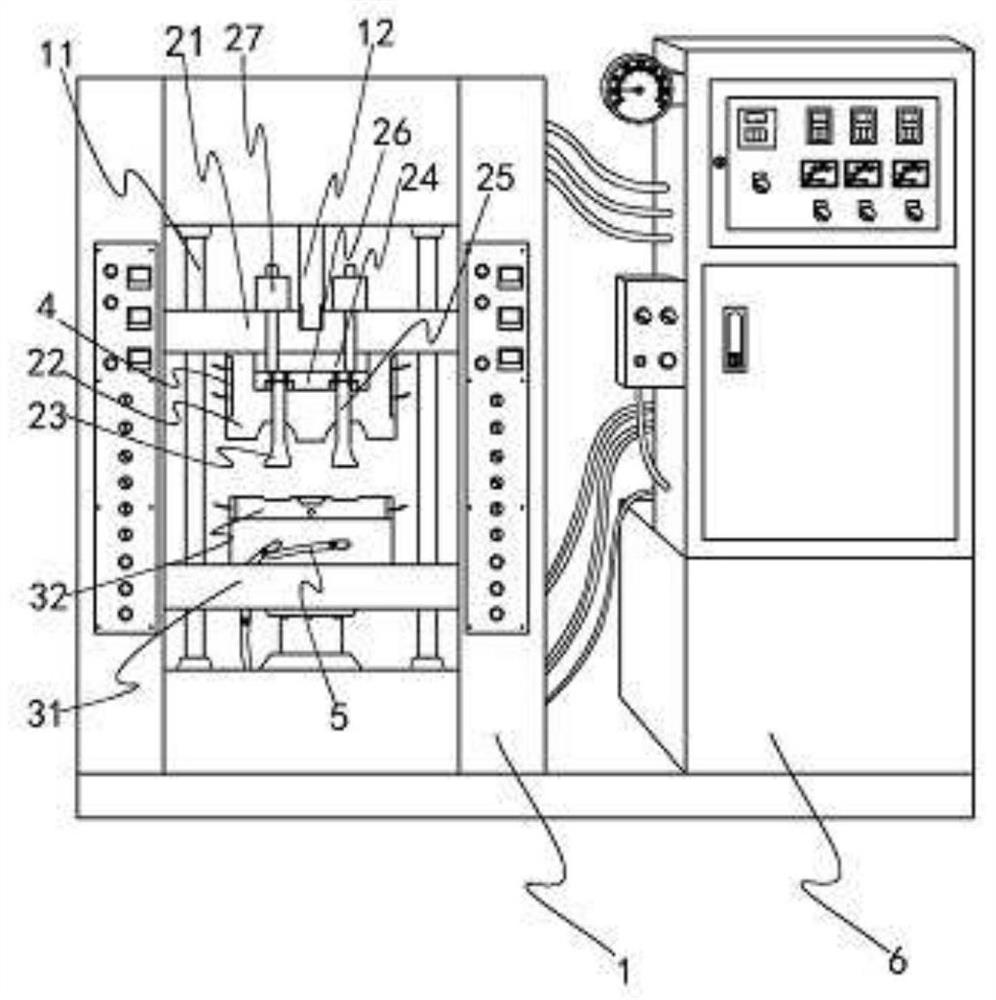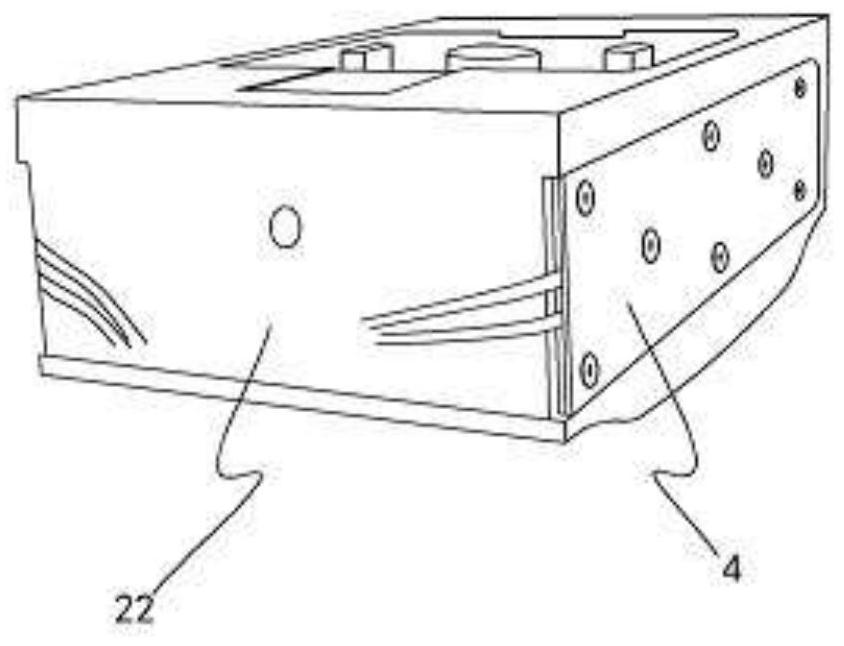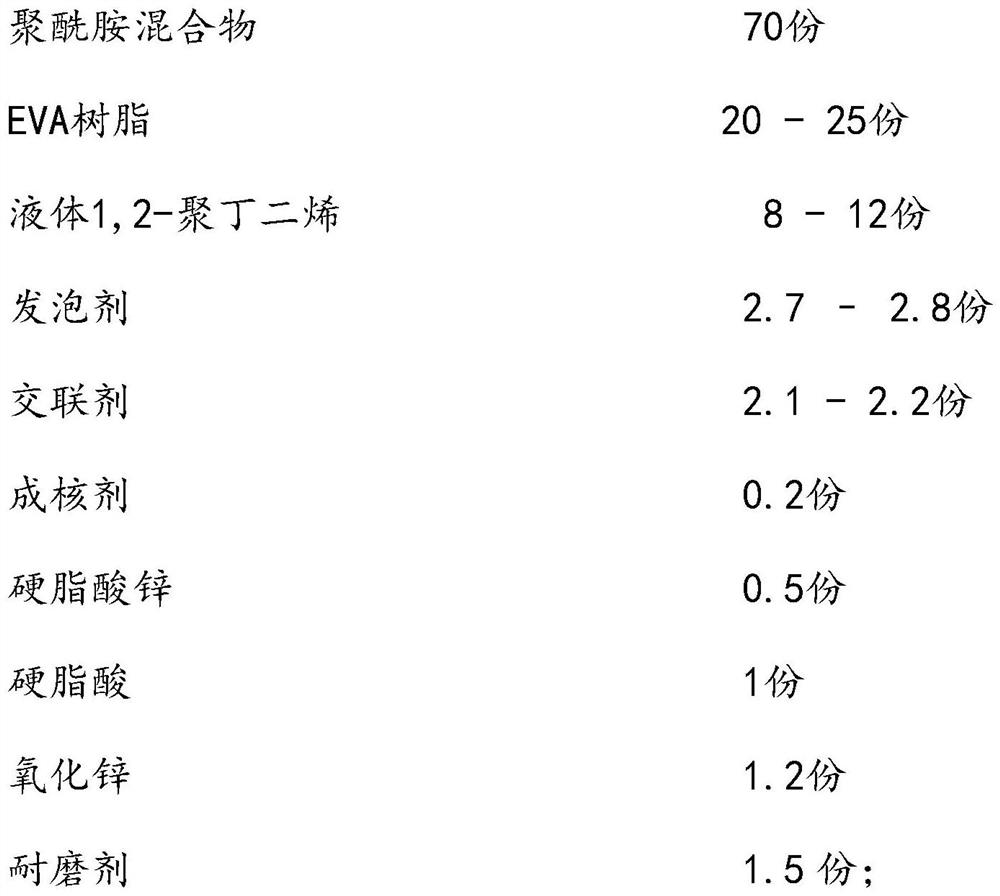A preparation method of soft skin-friendly slippers
A slipper and soft technology, which is applied in the field of soft skin-friendly slippers, can solve the problems of reduced vacuuming effect, stuck in the upper mold, high cost of accessories, etc.
- Summary
- Abstract
- Description
- Claims
- Application Information
AI Technical Summary
Problems solved by technology
Method used
Image
Examples
Embodiment 1
[0031] A preparation method of soft skin-friendly slippers, comprising the steps of:
[0032] Step 1. Preparation of polyamide mixture: in parts by weight, 45 parts of low-melting polyamide (DSC melting point 98° C.), 12 parts of superfine powder of hemp stalk core, 18 parts of EVA7470M, 1.5 parts of OBC907725 parts and zinc stearate, Premix in a high-speed mixer for 3 minutes, then pass the premixed material through a twin-screw extruder, melt extrude at 115° C., cool and granulate to obtain a polyamide mixture.
[0033] Step 2, preparing plastic rice: the plastic rice is prepared from the following components according to the following raw materials in parts by weight:
[0034]
[0035]
[0036] First mix other raw materials except foaming agent and cross-linking agent for banburying, turn over 5 times, the turning temperature is 80°C, 85°C, 89°C, 93°C, 97°C; then add foaming agent And cross-linking agent, continue to turn material 3 times, turning material temperatur...
Embodiment 2
[0047] The preparation method of soft skin-friendly slippers described in embodiment 2 is the same as the preparation method in embodiment 1, the difference is: in embodiment 2
[0048] In step 1, the DSC melting point of the low-melting polyamide is 85°C, and the twin-screw extrusion temperature is 95°C.
[0049] In step 2, 17 parts of EVA7470M, 12 parts of liquid 1,2-polybutadiene.
[0050] The soft skin-friendly slippers prepared above have a sole specific gravity of 0.19g / cm 3 , hardness 34C, DIN wear resistance 174mm 3 , Size shrinkage 1.4%, compression deformation 53%, anti-slip coefficient (smooth) dry 0.70 wet 0.49.
Embodiment 3
[0052] The preparation method of the soft skin-friendly slippers described in embodiment 3 is the same as the preparation method in embodiment 1, the difference is: in embodiment 3
[0053] In step 1, the DSC melting point of the low-melting polyamide is 110°C, and the twin-screw extrusion temperature is 125°C.
[0054] In step 2, there are 6 parts of EVA7470M, 14 parts of EVA 40W, 8 parts of liquid 1,2-polybutadiene, 2.8 parts of foaming agent AC, and 2.2 parts of crosslinking agent V-40.
[0055] In step 3, the vulcanization time is 250 seconds.
[0056] The soft skin-friendly slippers prepared above have a sole specific gravity of 0.20g / cm 3 , hardness 37C, DIN wear resistance 183mm 3 , Size shrinkage 1.7%, compression deformation 50%, anti-slip coefficient (smooth) dry 0.59 wet 0.40.
PUM
| Property | Measurement | Unit |
|---|---|---|
| melting point | aaaaa | aaaaa |
| melting point | aaaaa | aaaaa |
| hardness | aaaaa | aaaaa |
Abstract
Description
Claims
Application Information
 Login to View More
Login to View More - R&D
- Intellectual Property
- Life Sciences
- Materials
- Tech Scout
- Unparalleled Data Quality
- Higher Quality Content
- 60% Fewer Hallucinations
Browse by: Latest US Patents, China's latest patents, Technical Efficacy Thesaurus, Application Domain, Technology Topic, Popular Technical Reports.
© 2025 PatSnap. All rights reserved.Legal|Privacy policy|Modern Slavery Act Transparency Statement|Sitemap|About US| Contact US: help@patsnap.com



